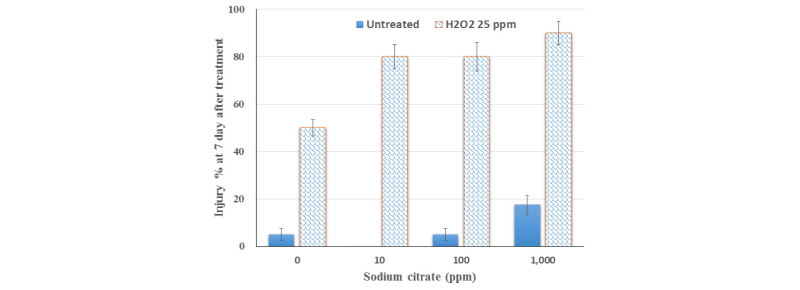Abstract
The seaweed Ulva spp., which is frequently bloomed in coastal areas, have negatively affected on marine ecosystem and industrial activities. Therefore, many researches have been conducted to solve this problem in the worldwide. In this study, we carried out several experiments to develop the methods for effectively controlling Ulva growth through an alone or mixture application of chemical and temperature. Three chemical mixtures (H2O2+ N-vanillylnonanamide; H2O2+nonanoic acid; H2O2+sodium citrate), those had a synergistic effect to the death of Ulva australis (ULAUS), were found out. On the other hand, the death of ULAUS was significantly enhanced and accelerated as some chemicals were briefly treated with warm water of 40°C rather than 25°C, showing that peracetic acid 100 ppm, sodium percarbonate 100 ppm, and hydrogen peroxide 30 ppm has a better activity than that of sodium chlorite 200 ppm and menadione sodium bisulfite 4 ppm. In addition, a strong synergistic effect to the death of ULAUS thallus was also observed when the sodium citrate 1,000 ppm (pH 3.0) or acetic acid 200 ppm (pH 3.5) solution prepared in f/2 medium were treated in a short time at 40°C. However, an additive effect was only appeared as pH values of their solutions were increased to 8.0. Taken together, It seemed that our results could be developed as one of an eco-friendly practical measures useful for alleviating Ulva bloom in the future.
Acknowledgements
This Research has been performed as a project No. SKO1707C31 (Eco-friendly control methods for preventing the algal bloom of Ulva spp. in the seashore) and supported by the Korea Research Institute of Chemical Technology (KRICT).
Figures & Tables

Fig. 1. Mixture effect of HO and sodium citrate on the growth of thallus disc excised from Ulva australis. Vertical bars represent standard deviations of three replicates.


